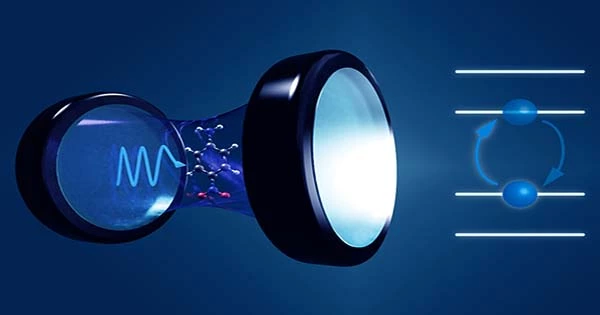German and American researchers have created the first theoretical demonstration that the magnetic state of an atomically thin material, a-RuCl3, may be altered only by placing it in an optical cavity. Importantly, the cavity vacuum fluctuations alone are sufficient to alter the magnetic order of the material from zigzag antiferromagnet to ferromagnet. The team’s study was published in the journal npj Computational Materials.
The use of strong laser light to affect the characteristics of magnetic materials has been a current focus in material physics research. Researchers have been able to dramatically alter the electrical conductivity and optical properties of many materials by carefully altering the properties of laser light.
However, this needs constant stimulation with high-intensity lasers and is connected with various practical issues, the most significant of which is the difficulty in stopping the material from heating up. Researchers are therefore seeking ways to achieve similar control over materials using light without the use of powerful lasers.

Theorists at the Max Planck Institute for the Structure and Dynamics of Matter (MPSD) in Hamburg, Germany, Stanford University, and the University of Pennsylvania (both in the United States) have developed a fundamentally new method for changing the magnetic properties of a real material in a cavity without the use of laser light. Their team demonstrates that the cavity alone is sufficient to convert the zigzag antiferromagnet a-RuCl3 to a ferromagnet.
Importantly, the researchers show that even in an ostensibly dark hollow, -RuCl3 detects changes in the electromagnetic environment and adjusts its magnetic state accordingly. This is a completely quantum mechanical effect caused by the fact that the empty cavity (officially known as the vacuum state) is never truly empty in quantum theory. Instead, the light field changes, causing light rays to appear and disappear, affecting the material’s characteristics.
“The optical cavity confines the electromagnetic field to an extremely tiny volume, thereby enhancing the effective coupling between the light and the material,” explains lead author Emil Vias Boström, a postdoctoral researcher in the MPSD Theory Group. “Our results show that properly engineering the vacuum fluctuations of the cavity electric field can lead to drastic changes in a material’s magnetic properties.” Because no light stimulation is required, the method avoids the issues associated with continuous laser driving.
This is the first study to show cavity control of magnetism in a genuine material, and it builds on past research into cavity control of ferroelectric and superconducting materials. The researchers expect that by creating precise cavities, they may be able to actualize new and elusive phases of matter and gain a deeper understanding of the complex interplay between light and matter.
















